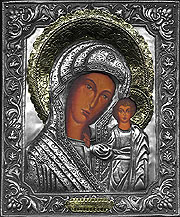
|
|
|
|
SILVER ICONS #A1 THROUGH #A71P |
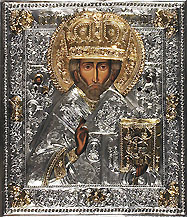 #A33 St Nicholas |
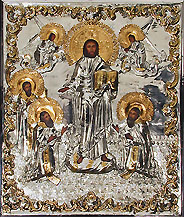 #A34 Christ Receiving Bishops |
The following observations are about iconic style as carried out in the metallic covers of type "A" icons.
Distorted Perspective. Iconographers (Eastern) often distort three dimensional perspective in order to convey that the subject matter is not "of this world". In icon A33 (St. Nicholas) the body appears flattened. In icon A34 (Receiving Bishops), Christ is portrayed larger than 3-d perspective would suggest. |
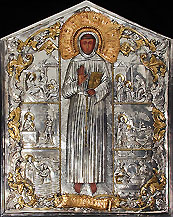 #A51 St Francis |
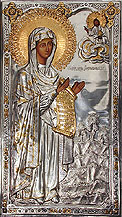 #A35 Bogolyubsky |
In icon #A51 (St. Francis and #A35 (Bogolyubsky), background scenes suggest depth of field but with foreshortened distances.
The six scenes from the life of St. Francis purposefully do not have perspective lines that narrow with distance (e.g., what would happen with railroad tracks going towards the horizon). In many icons, perspective lines actually diverge going into the far distance. In icon #A35, the land/trees do not fully take advantage of 3-d perspective. |
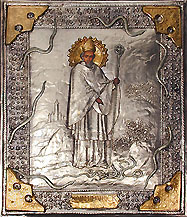 #A57 St Patrick |
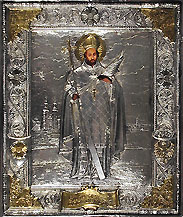 #A61 St Adalbert |
3-d Perspective Suggested. Celtic icons #A57 (St. Patrick) and #A61 (St. Adalbert) are are different than previous 4 icons (#A33, #A34, #A51, & #A35). That is, 3-d perspective is strongly suggested with the use of buildings in the background as well as bodies that are more life-like. |
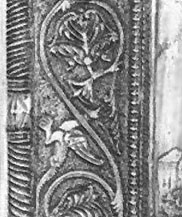 #A61 St Adalbert - Detail |
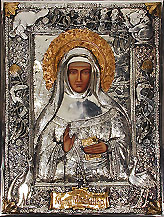 #A62 MacKillop Australia |
Celtic icons. Two charcteristics in the #A61-Detail image indicate #A61 to be a Celtic icon. First is interlocking broadly curved lines. Second, a small animal is worked into the curving lines design. The animal is a mythical pagan dragon (with wings) which the early Christian Church required Celtic Christian iconographers to stylize (hide) in the background.
Animals. Animals on the border can be seen quite distinctly in icons #A57 (St. Patrick) and #A62 (Blessed Mary MacKillop from Autralia). It is interesting that in both these icons, the animals cross the border and extend into the center area. Typically, the border is a distinct area from the rectangle ("phon" in Russian) containing the central figures. |
|
SILVER ICONS #S1 THROUGH #S65 |
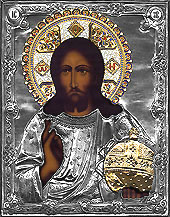 S51 - Pantocrator Very Large Image of S51 |
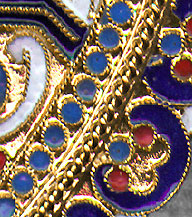
S51 Enamelling Detail |
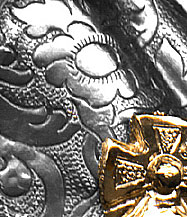
S1 Metalworking Detail |
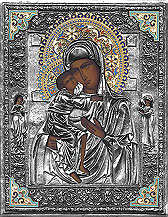 S1 - Teodor Very Large Image of S1 |
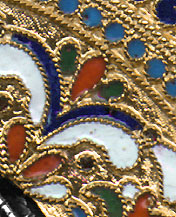 S1 Enamelling Detail |
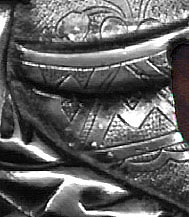 S1 Metalworking Detail |
|
The enamelling for Silver Icons S1-S65 is double-baked for hardness. Gold threads typically form reservoirs into which the enamel is placed, thus creating the a cloisonne appearance.
As seen above, the metalworking for Silver Plated Icons is quite fine, with considerable three-dimensional bas-relief.
|
||
|
PEWTER ICONS #P1 THROUGH #P23 |
||
|
||
|
The enamelling for Pewter Icons P1-P23 is hand-painted.
The metalworking has fine detailing.
|
|
using account: 
|
